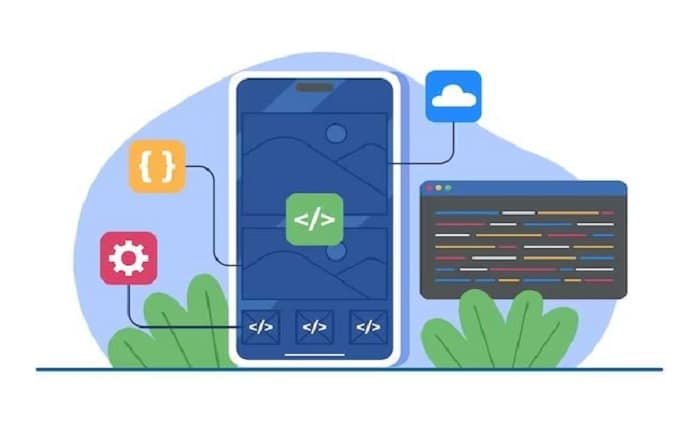Features of the backend app development in 2024

What are the essential components of the backend for mobile apps?
The mobile app backend development system is a complex mechanism with a certain number of components. Together, they create a working environment where developers build mobile apps, their functionality, and support them. Let’s take a look at the components of a modern backend for mobile applications.
Server infrastructure
Cloud services or in-house servers for processing requests and storing data.
Databases
SQL or NoSQL databases for storing structured and unstructured data.
APIs
Interfaces for the mobile app to interact with the backend, usually RESTful or GraphQL.
Authentication and security
Systems for user authorization and data protection, including OAuth, and JWT.
Business logic processing
Server-side logic for implementing application functionality.
How has cloud computing transformed the way mobile app backends are built and scaled?
Over the past few years, cloud computing has significantly changed the way mobile app backends are built and scaled. This process has happened largely due to the cloud’s ability to easily scale resources in real time according to the applications’ needs. It is also worth saying that cloud computing services provide stable operation and minimize downtime. Why? Because they efficiently backup and distribute the created architecture. And a few words about security. Built-in cloud solutions protect data and ensure compliance with all security standards. These improvements are already showing results and open up new opportunities for backend development in the future.
What are the best practices for designing and developing scalable mobile app backends?
Today, backend developers have many options for developing and designing mobile apps. Let’s take a look at the best practices that help create effective and business-oriented products. First of all, it is the use of microservices. Which means separation into independent services for better scalability and management. The next crucial point is auto-sharding and load balancing. It makes it possible to distribute requests across multiple servers for optimal performance.
Caching reduces the load on the database and speeds up the response. Automating integration and deployment processes for continuous improvement and updates is a must. It’s also vital to constantly monitor the application to identify and resolve issues.
What are the most popular programming languages, frameworks, and tools for building mobile app backends in 2024?
Every year, the digital market offers lots of new tools, approaches, and frameworks for building mobile app backends. Here are the most popular ones that will be useful in 2024.
Speaking of programming languages, the list of the best ones today includes JavaScript/TypeScript, Python, Java, and Go. Each of them is highly performant, widely used in programming, has a large number of tools and libraries, and integrates easily with cloud services.
There are also a lot of frameworks worth using in 2024: Node.js (Express), Django/Flask (Python), Spring Boot (Java), and FastAPI (Python). These frameworks allow developers to create server applications, RESTful APIs, and microservices. Their speed and scalability make them ideal for application development.
This year’s tools include Docker, Kubernetes, and AWS/Azure/GCP. They automate application deployment, updates, and monitoring, are easy to integrate, and run on a variety of platforms.
How can developers ensure the security and privacy of mobile app data?
Experienced developers can ensure the security and privacy of mobile app data in a few steps. Here they are:
Data encryption
Teams use encryption to store and transmit data (e.g., HTTPS, AES).
Secure authentication
Two-factor authentication and secure login methods such as OAuth or JWT will provide reliable protection.
API protection
Developers limit access to APIs by using access keys, tokens, and request frequency limits.
Regular updates and patches
Timely updates of the application and used libraries will protect them from new threats.
What are the emerging trends and technologies that will shape the future of mobile app backends?
As we have already said, the market of innovations does not stand still and offers even more technologies to make the development process easier and more enjoyable. The future of mobile backends will be shaped by the following technologies and trends.
Serverless architecture
Reduces costs and simplifies scaling with functions as a service (FaaS).
Microservices
They are distributed services that increase flexibility, scalability, and development speed.
Integration of AI and machine learning
AI is caring for data analysis, process automation, and improving user experience.
API-first approach
Focusing on creating APIs as the basis for mobile and web applications, which provides the flexibility of integrations.
Zero Trust Security
An approach to security where all requests are considered potentially dangerous, which increases data protection.




